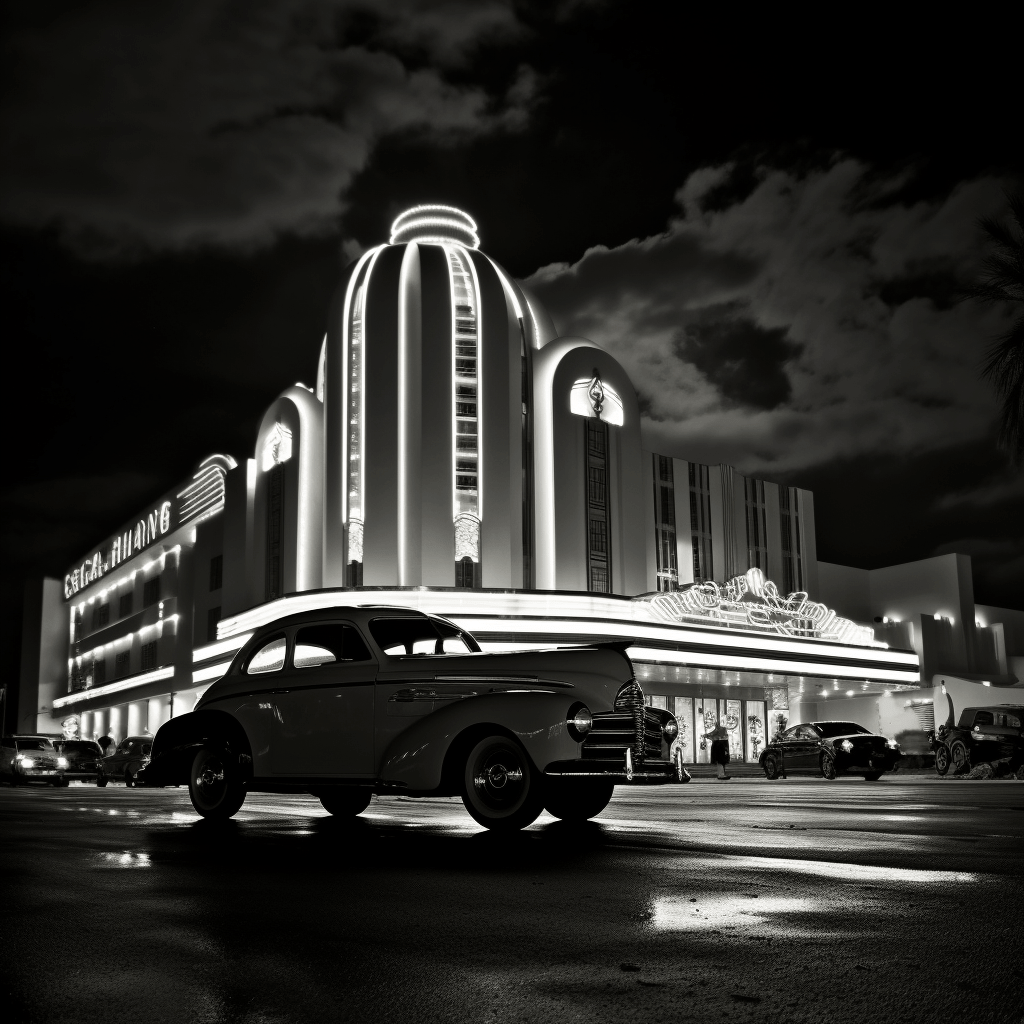What's After the Blog?
History • Cinema
The Charm and Challenges of Period Films
Discover the allure and complexities of period films, from crafting authentic historical worlds to balancing artistic storytelling with historical accuracy.
July 26, 2024

Movies mentioned in this article
The Charm and Challenges of Period Films
Introduction
Period films have a unique charm, captivating audiences by transporting them to bygone eras, immersing them in the sights, sounds, and stories of the past. These films, ranging from the regal elegance of Pride and Prejudice to the gritty realism of Saving Private Ryan, offer more than just entertainment; they provide a window into the lives, cultures, and events that have shaped our world. The allure of period films lies in their ability to recreate historical periods with astonishing detail and accuracy, making them a fascinating study for both history buffs and cinema enthusiasts. The challenge for filmmakers, however, is formidable. They must balance historical accuracy with artistic storytelling, create authentic-looking sets and costumes, and evoke the era’s atmosphere, all while crafting a narrative that resonates with contemporary audiences. This intricate dance between factual representation and creative liberty defines the essence of period filmmaking.
Period films serve as a visual archive of human history, showcasing the fashion, architecture, and social norms of different times. They bring history to life in a way that textbooks cannot, making them an invaluable resource for education and cultural preservation. Consider the Victorian settings of The Young Victoria, which not only depict the life of Queen Victoria but also offer a glimpse into the political, social, and fashion trends of the era. Similarly, war films like Dunkirk provide a visceral representation of historical events, allowing viewers to experience the intensity and emotion of moments that have shaped our collective history. The power of period films lies in their ability to humanize history, transforming names and dates into tangible, relatable stories.
Crafting the Visual Aesthetics
The visual aesthetics of period films are fundamental to their success. Every element, from the grandeur of palace interiors to the nuances of period-appropriate attire, plays a crucial role in creating an authentic historical experience. The meticulous attention to detail in films like The Great Gatsby or Amadeus is not just about visual splendor; it’s about immersing the audience in the era, making the film a time machine of sorts. The production design, costume design, and prop selection are critical in this regard.
In The Great Gatsby, for example, the opulent sets and lavish costumes effectively evoke the extravagance of the Roaring Twenties, while the historically accurate costumes in Downton Abbey offer a glimpse into early 20th-century British fashion. The authenticity of these elements is key to the credibility of the film; even minor anachronisms can break the spell for the audience. This commitment to authenticity extends to the use of locations and sets. Films like Braveheart often use real historical sites to add depth and realism to their storytelling, while others, like Gladiator, recreate ancient worlds with stunning accuracy through a combination of set design and CGI.
The challenge for filmmakers is not just in the creation of these visual elements but also in ensuring that they complement the narrative. The aesthetics should not overshadow the story but rather enhance it, adding layers of context and meaning. This requires a careful balance, as the visual spectacle must serve the film’s emotional and thematic core, not detract from it.
Historical Accuracy vs. Artistic License
The tug-of-war between historical accuracy and artistic license is a central theme in the creation of period films. Directors and screenwriters often face the dilemma of how closely they should adhere to historical facts, and when to take creative liberties. This balance is critical because while accuracy adds credibility and depth to the film, artistic license can enhance storytelling and emotional impact. Consider Amadeus, a film that, while not entirely accurate in its portrayal of Mozart and Salieri’s relationship, brilliantly captures the spirit of the era and the essence of Mozart’s genius. The film uses historical settings as a backdrop, but its primary focus is on exploring universal themes like jealousy and the nature of artistic creation.
On the other hand, films like Schindler’s List adhere closely to historical events, emphasizing the importance of accuracy in recounting significant historical incidents. Here, the deviation from facts could undermine the film’s authenticity and the seriousness of the subject matter. Filmmakers must navigate these choices carefully, as the degree of artistic liberty taken can significantly impact how the film is received by both critics and audiences. The decision often depends on the film’s intent – whether to provide an accurate historical representation or to use history as a canvas for broader storytelling.
The Role of Research in Period Films
In-depth research is the backbone of any successful period film. The journey of creating an authentic portrayal of a historical era begins long before the cameras start rolling, involving extensive study and exploration. Production teams delve into history books, journals, paintings, and photographs to understand the minutiae of the period they intend to recreate. This research is not limited to visual elements like costumes and sets but extends to the dialects, social customs, and psychological milieu of the time.
For instance, the production of Schindler’s List involved meticulous research into the Holocaust, including interviews with survivors and studies of documentaries and photographs from the era. This extensive groundwork ensured the film’s portrayal was not only visually accurate but also emotionally resonant and respectful of the historical context. Similarly, in The Crown, the portrayal of historical figures like Queen Elizabeth II and Winston Churchill was grounded in thorough research, ensuring nuanced and authentic characterizations.
The importance of research in period films cannot be overstated. It provides the foundation upon which the film’s credibility rests and plays a crucial role in immersing the audience in the historical world of the film. Well-researched films not only entertain but also educate, offering viewers a glimpse into periods of history they may not be familiar with, thus broadening their understanding and appreciation of the past.
How Do Period Films Impact Our Understanding of History?
Period films play a significant role in shaping public perception and understanding of history. They have the power to bring historical events to life, making them more relatable and accessible to a broad audience. Films like Braveheart and Lincoln not only entertain but also educate, sparking interest in historical figures and events. However, this influence carries a responsibility. Since films can sometimes be a person’s primary source of information about a particular era, inaccuracies or bias in these movies can lead to misconceptions about historical facts. The impact of period films on our understanding of history is profound; they can reinforce, challenge, or even reshape our perceptions of the past.
For example, Braveheart, while celebrated for its compelling narrative and emotional depth, has been criticized for its historical inaccuracies. These discrepancies can skew viewers’ understanding of the real William Wallace and the history of Scotland. On the other hand, Schindler’s List is often lauded for its accurate and sensitive portrayal of the Holocaust, providing audiences with a deeper, more empathetic understanding of this tragic period in history. This dual capacity of period films to both educate and misinform makes their role in our cultural narrative complex and significant.
Challenges in Casting and Performance
Casting and performance in period films present unique challenges. Actors not only have to convincingly portray historical characters but also adapt to the mannerisms, dialects, and attitudes of different eras. This requires a deep understanding of the character’s historical context and often involves rigorous preparation and research. For instance, in The Crown, actors had to embody real-life figures like Queen Elizabeth II and Prince Philip, capturing their personalities and idiosyncrasies, which required meticulous study and preparation.
Moreover, casting choices can greatly influence the authenticity and credibility of a period film. Casting actors who fit the historical profiles of their characters in terms of age, appearance, and demeanor is crucial. However, there’s also a growing trend of reimagining historical figures through a more modern lens, sometimes casting actors who don’t conventionally fit historical descriptions but bring depth and freshness to the role. This approach can be seen in films like Hamilton, where historical figures are portrayed by actors of diverse ethnicities, adding a contemporary twist to the story and making it more accessible to a modern audience.
In summary, casting and performance are critical in bringing authenticity to period films. They require a fine balance between historical accuracy, creative interpretation, and artistic expression to successfully transport audiences to a different time and place.
Technology’s Role in Enhancing Historical Realism
The advancement of technology has significantly enhanced the realism and authenticity of period films. Modern filmmaking tools, especially Computer-Generated Imagery (CGI), have opened up new possibilities for recreating historical settings and events with incredible detail and accuracy. CGI allows filmmakers to construct realistic backdrops and landscapes, create large-scale battle scenes, and even resurrect ancient cities, as seen in films like Gladiator and Troy. This technology has become an indispensable tool in the period filmmaker’s arsenal, enabling the portrayal of historical periods that would be impossible, impractical, or prohibitively expensive to recreate physically.
However, the use of technology in period films is not without its challenges. Over-reliance on CGI can sometimes lead to a lack of authenticity, making the film feel more like a fantasy than a historical portrayal. It’s crucial for filmmakers to strike a balance between using technology to enhance realism and ensuring that the film retains a tangible, authentic feel. For example, in Dunkirk, director Christopher Nolan opted for practical effects and real historical aircraft to capture the intensity and realism of World War II aerial battles, using CGI sparingly. This approach helped create a more immersive and believable experience for the audience.
Why are Some Historical Periods More Popular in Films Than Others?
Certain historical periods tend to be more popular in films due to their inherent drama, visual appeal, or relevance to contemporary issues. For instance, World War II has been a particularly fertile ground for filmmakers, with countless films like Saving Private Ryan and Schindler’s List exploring various facets of this tumultuous period. The war’s clear moral dichotomies, combined with its global impact and the heroism and tragedy it entailed, make it a compelling backdrop for storytelling.
Another popular era is the Victorian period, depicted in films like The Young Victoria and Sherlock Holmes. This era’s distinct fashion, architecture, and social norms, coupled with its complex mix of progress and poverty, provide a rich tapestry for filmmakers to explore. Additionally, the romanticization of certain historical periods plays a role in their popularity. The Middle Ages, for instance, are often portrayed as a time of chivalry and adventure, as seen in films like Braveheart and Robin Hood, despite the historical reality being much harsher.
The popularity of these periods can also be attributed to their potential for exploring themes that resonate with contemporary audiences, such as freedom, justice, and love. Ultimately, the choice of period is often a combination of its visual and dramatic potential, its ability to connect with current societal issues, and its appeal to both filmmakers and audiences alike.
Audience Reception and Critique
The reception of period films by audiences and critics can vary greatly, influenced by factors such as historical accuracy, storytelling, and the emotional resonance of the film. Audiences often approach period films with expectations shaped by their own knowledge and understanding of the historical era depicted. For instance, films like Pride and Prejudice attract a fanbase familiar with Jane Austen’s novel, expecting a faithful rendition of the beloved story and its setting. When a film meets or surpasses these expectations, it can lead to critical acclaim and commercial success. However, deviations from historical facts or the source material can attract criticism, especially from purists and historians.
The critique of period films also extends to their portrayal of social issues and historical events. For example, 12 Years a Slave was lauded for its raw and honest portrayal of slavery in America, while others like The Greatest Showman, though popular, faced criticism for glossing over the more controversial aspects of P.T. Barnum’s life. The ability of period films to spark discussions about historical accuracy, representation, and the ethical implications of dramatizing real-life events highlights their impact on cultural and historical discourse.
Conclusion
Period films represent an important genre in the cinematic world, offering a blend of historical education, artistic storytelling, and entertainment. The charm of these films lies in their ability to transport audiences to different times, allowing them to experience the complexities, struggles, and triumphs of past eras. The challenges faced in creating period films, from ensuring historical accuracy to casting and technological considerations, only add to the respect and admiration for the filmmakers who successfully bring these stories to life. As we continue to see a diverse range of historical periods depicted on the big screen, these films not only enrich our understanding of the past but also offer a mirror to our present and a lens through which to view our future.
For more insights into the world of cinema, from the charm of period films to the thrill of modern blockbusters, be sure to explore our blog at What’s After the Movie (ATM). Dive into our extensive database for movie descriptions, actor details, and to find out about those all-important end credit scenes.
Continue reading

What's After the Movie?
Not sure whether to stay after the credits? Find out!
Check out our other apps:
Actors
Companies
Latest Movies
© 2025 What's After the Movie. All rights reserved.






















